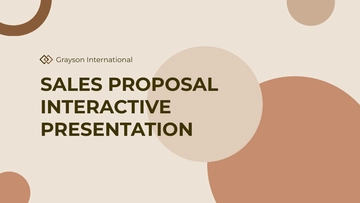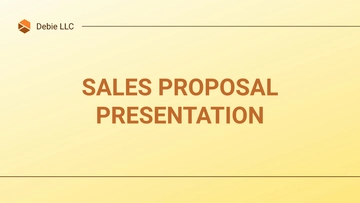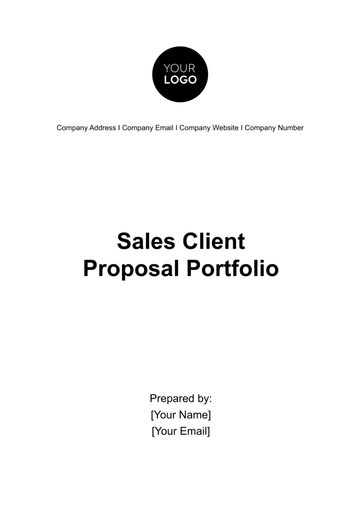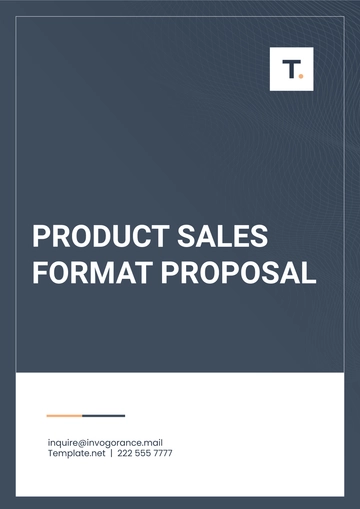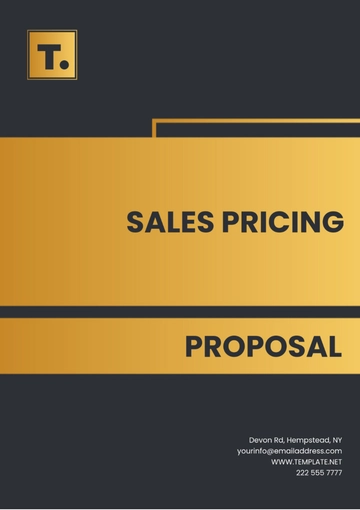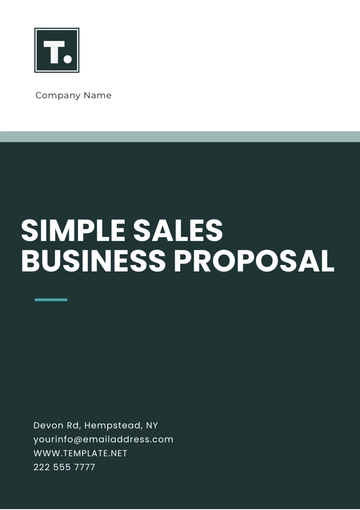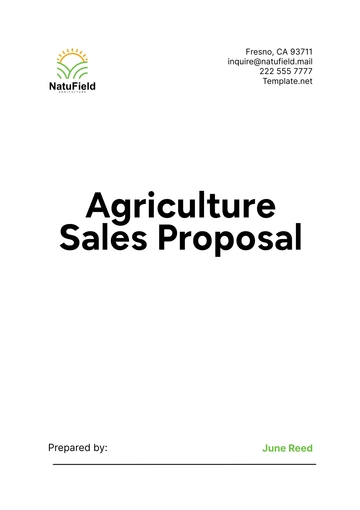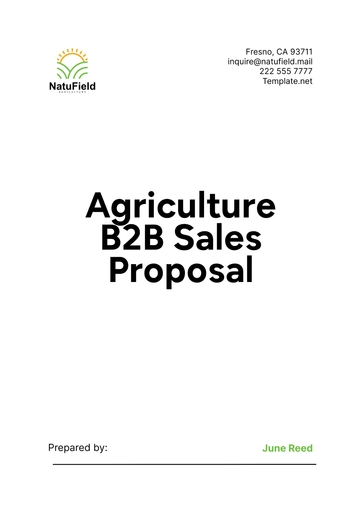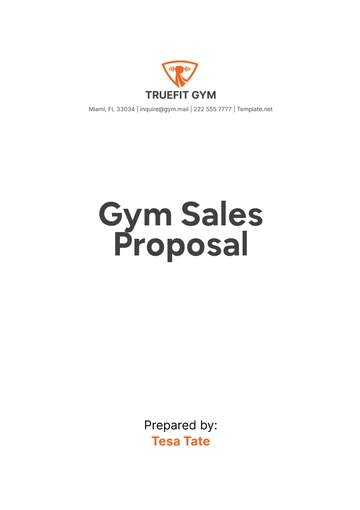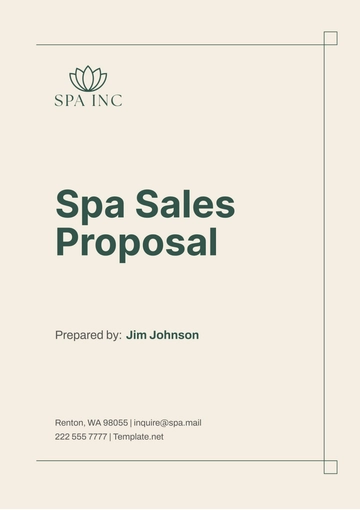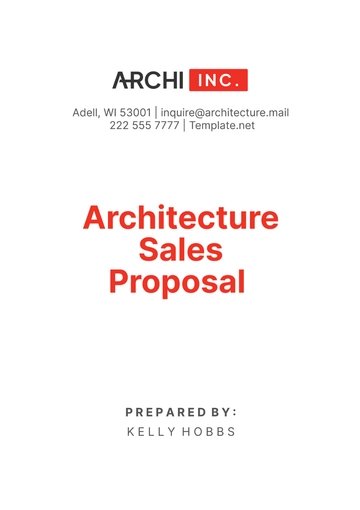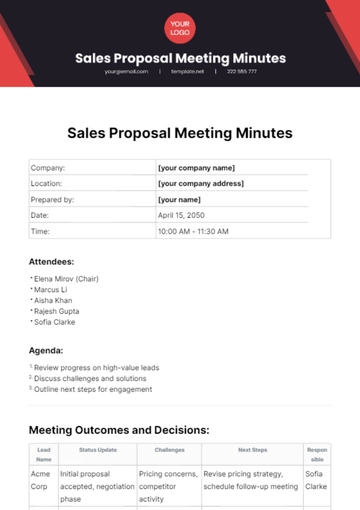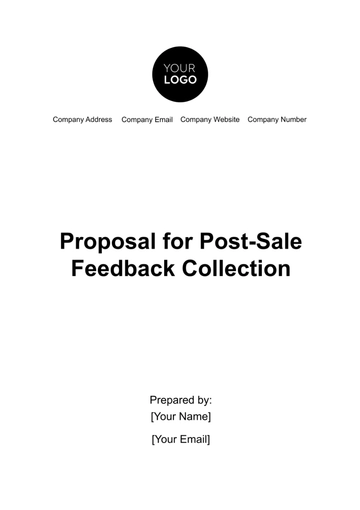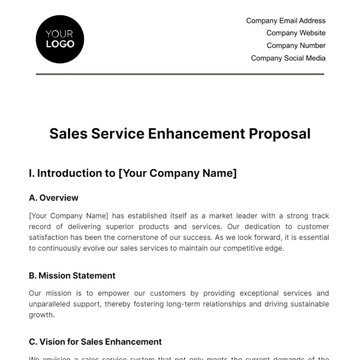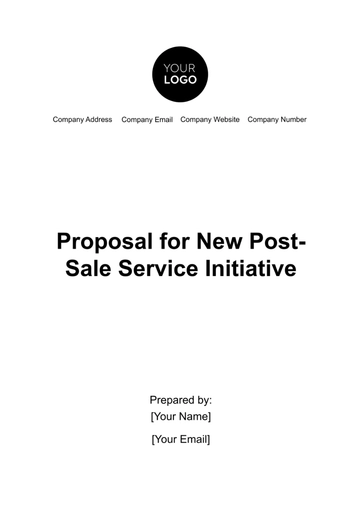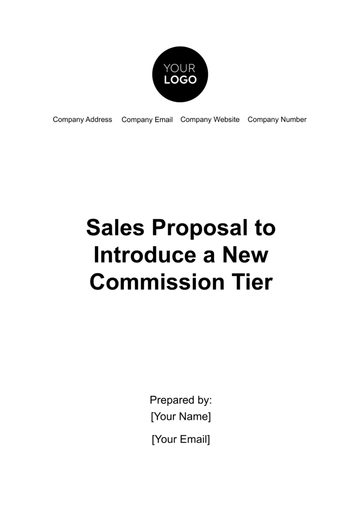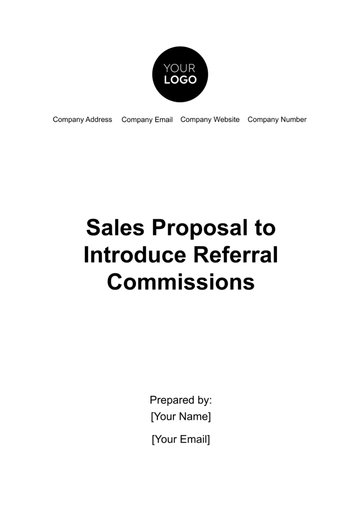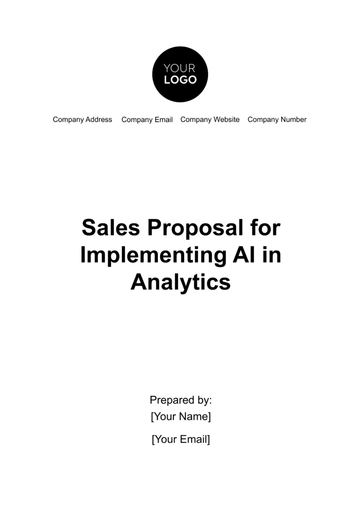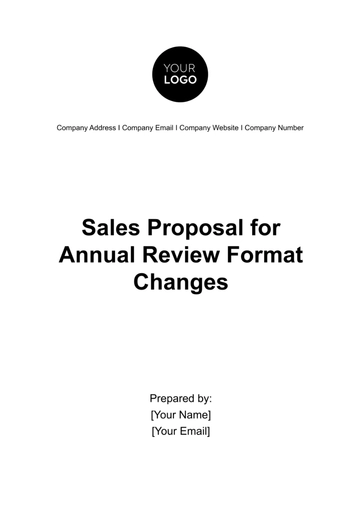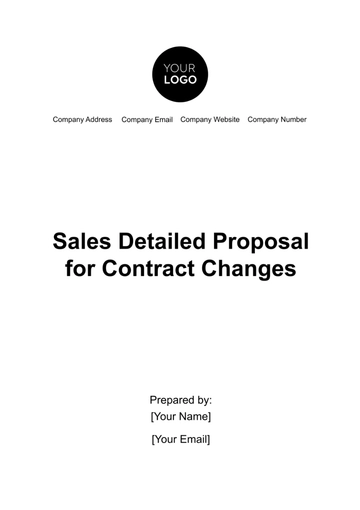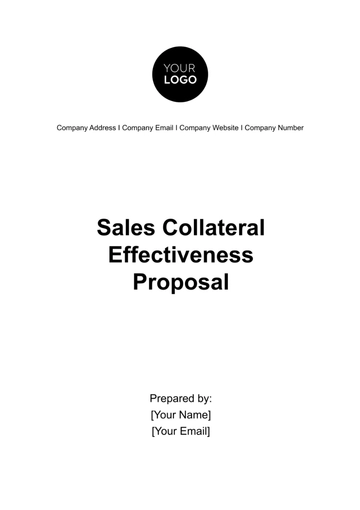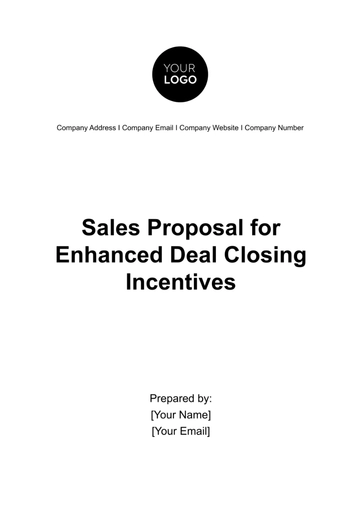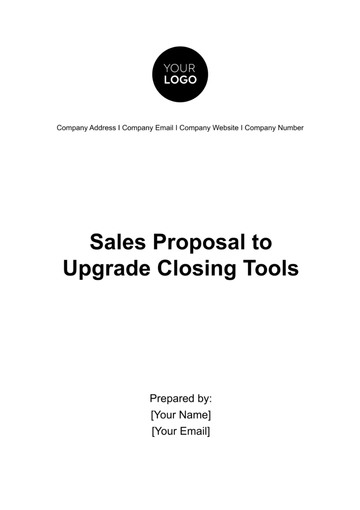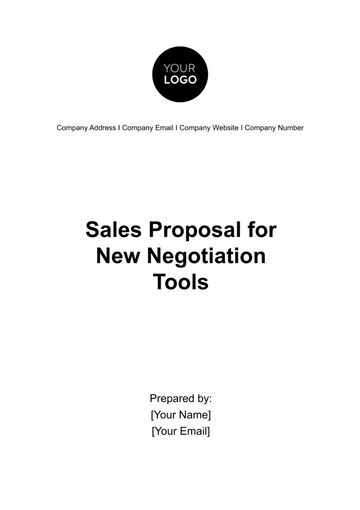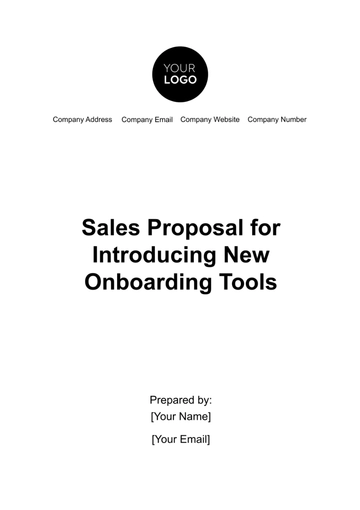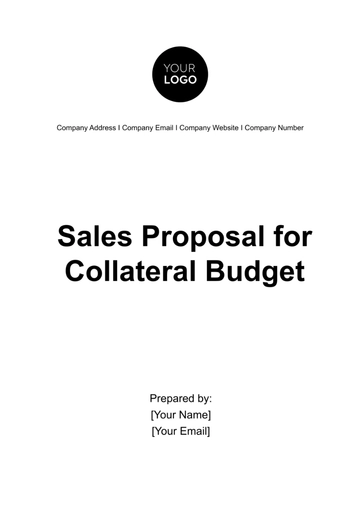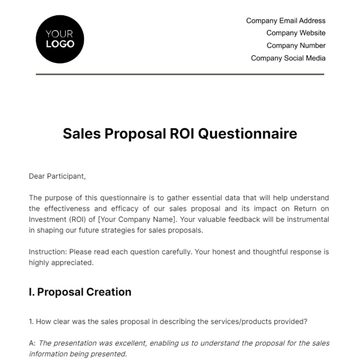Free Sales Comprehensive Sales Proposal Analysis
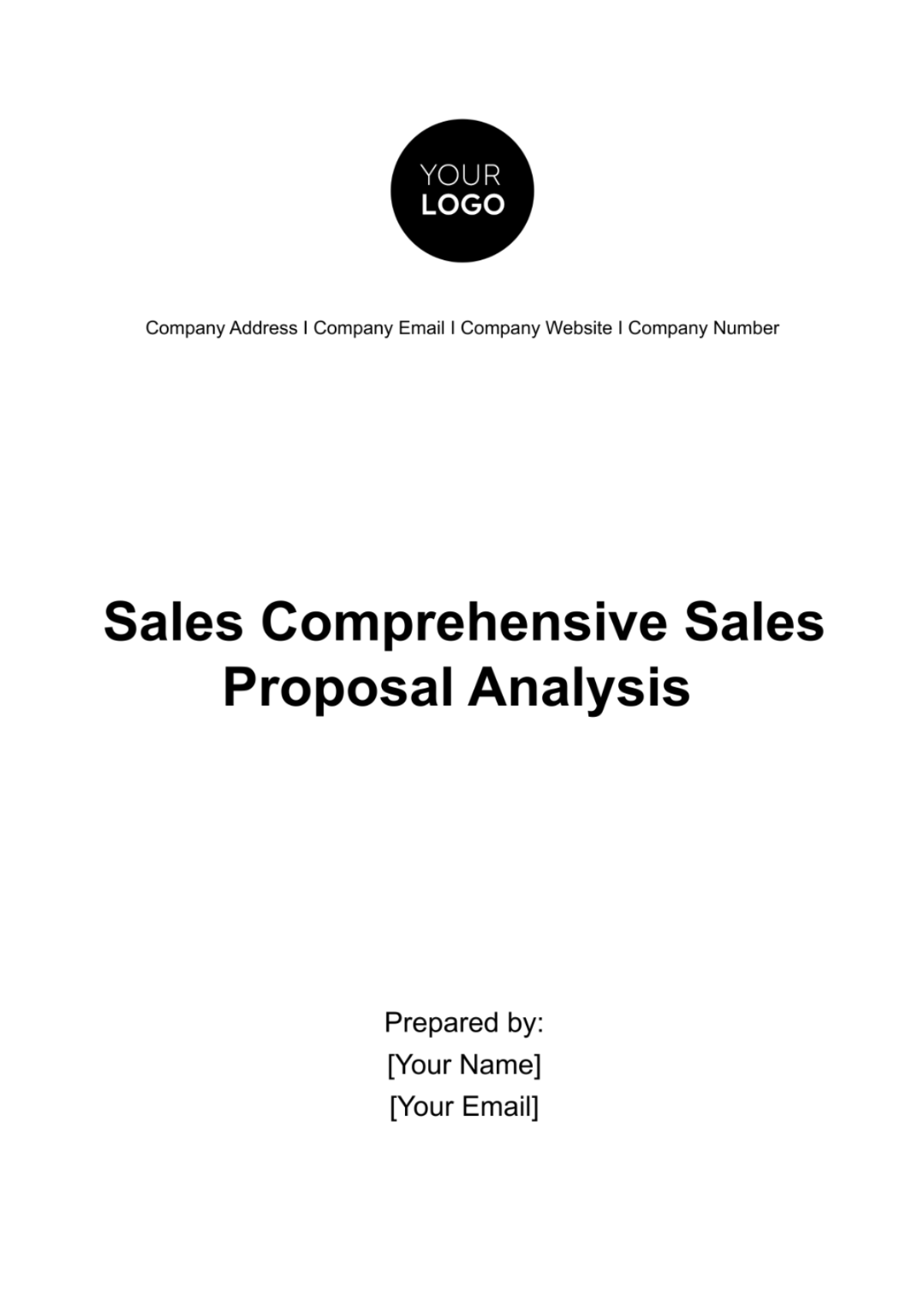
Prepared by: | [YOUR NAME] |
|---|---|
Company: | [YOUR COMPANY NAME] |
Executive Summary:
The Sales Annual Quote Analysis Report delves into the performance of [Your Company Name]'s sales quotes throughout the year. This analysis aims to evaluate the effectiveness of the quoting process, identify key trends, and propose strategic recommendations to enhance sales outcomes and customer satisfaction.
I. Introduction:
A. Company Overview:
[Your Company Name], a vibrant and community-focused establishment, prides itself on providing a unique coffee experience. The success of [Your Company Name] relies heavily on its ability to generate compelling quotes that not only attract customers but also contribute to the overall profitability of the business.
B. Purpose of the Report:
This report aims to assess the performance of [Your Company Name]s sales quotes over the past year. By examining key metrics, identifying successful practices, and addressing areas for improvement, we intend to optimize the quoting process for increased revenue and customer loyalty.
II. Methodology:
A. Data Collection:
The analysis is based on a comprehensive dataset of [Your Company Name]'s quotes from the previous fiscal year. Data includes quote values, win/loss outcomes, customer feedback, and other relevant information obtained from the point-of-sale system and customer surveys.
B. Key Metrics:
Win Rate:
Definition: Percentage of quotes that resulted in a successful sale.
Calculation: (Number of Wins / Total Number of Quotes) * 100.
Average Transaction Value:
Definition: Mean value of all transactions resulting from quotes.
Calculation: Total Revenue / Number of Wins.
Customer Satisfaction Score (CSAT):
Definition: A metric measuring customer satisfaction based on post-sale surveys.
Calculation: (Number of Positive Responses / Total Responses) * 100.
III. Analysis:
A. Win Rate Analysis:
[Your Company Name] boasts a commendable overall win rate of [40%]. However, there are variations among different product lines. For example, specialty coffee drinks have a [50%] win rate, while pastries lag behind at [30%]. Understanding these disparities can guide targeted improvements and marketing strategies.
B. Average Transaction Value:
The average transaction value for [Your Company Name] is [$10], reflecting a healthy balance between affordability and profitability. To further capitalize on this, identifying opportunities to upsell premium products or introduce value-added bundles could contribute to higher average transaction values.
C. Customer Satisfaction Score (CSAT):
[Your Company Name]'s CSAT stands at [85%], indicating a strong customer satisfaction level. While this is a positive outcome, the report will explore ways to enhance customer experience further.
IV. Success Factors:
A. Menu Customization:
Analysis reveals that quotes tailored to individual customer preferences have a higher success rate. For example, personalized coffee recommendations based on previous purchases result in a 60% win rate compared to a [40%] win rate for generic recommendations.
B. Loyalty Programs:
Customers enrolled in [Your Company Name]'s loyalty program show a [20%] higher win rate compared to non-members. Emphasizing the benefits of the loyalty program in quotes and marketing materials can encourage sign-ups and boost sales.
C. Seasonal Promotions:
Quotes featuring limited-time seasonal promotions have a [15%] higher win rate. Leveraging this insight, [Your Company Name] can strategically plan and promote seasonal offerings to maximize sales during specific periods.
V. Areas for Improvement:
A. Speed of Service:
While the overall win rate is commendable, analysis indicates a potential correlation between the speed of service and the win rate. Quotes processed more efficiently, especially during peak hours, tend to result in higher success rates.
B. Diversification of Product Offerings:
The analysis highlights an opportunity to diversify product offerings, particularly in the pastry category. Introducing new and innovative pastries or collaborating with local bakers can attract a broader customer base.
VI. Recommendations:
A. Implement Digital Ordering System:
Mobile App Integration:
Develop a user-friendly mobile app that allows customers to browse the menu, place orders, and make payments seamlessly. The app should include features such as personalized recommendations based on past orders, creating a more engaging and convenient experience.
Order-Ahead Feature:
Implement an order-ahead feature within the mobile app, enabling customers to place orders in advance. Integrate real-time notifications to inform customers when their orders are ready for pickup. This not only streamlines the ordering process but also enhances customer satisfaction by reducing wait times.
Integration with Loyalty Program:
Ensure seamless integration between the digital ordering system and Carlo Coffee Shop's loyalty program. Loyalty points should be automatically accrued for digital orders, providing an additional incentive for customers to embrace the app and the loyalty program simultaneously.
Data Analytics for Personalization:
Utilize data analytics from the digital ordering system to gain insights into customer preferences and behaviors. Leverage this data to personalize recommendations, promotions, and loyalty rewards, creating a more tailored and engaging experience for customers.
B. Menu Diversification and Bundling:
New Pastry Offerings:
Collaboration with Local Bakers: Establish partnerships with local bakeries to introduce a rotating selection of unique pastries. Highlight the collaboration in marketing materials to attract customers looking for diverse and locally sourced options.
Customer Sampling Events:
Detailed Implementation: Host sampling events to introduce new pastries to customers. Offer complimentary tastings of featured pastries alongside coffee purchases to encourage trial and gather immediate feedback. Positive feedback can be incorporated into marketing materials to drive future sales.
Bundled Promotions:
Themed Bundles and Limited-Time Offers: Create themed bundles, such as a "Morning Boost Combo" featuring a specialty coffee and a breakfast pastry at a discounted price. Introduce limited-time offers to create a sense of urgency and excitement, encouraging customers to explore different combinations.
Interactive Menu Displays:
Detailed Implementation: Implement interactive digital menu displays in-store, showcasing bundled promotions and highlighting new pastry offerings. This not only attracts attention but also provides a dynamic way to communicate the value of different combinations, potentially increasing average transaction values.
C. Enhanced Loyalty Program Engagement:
Promotional Incentives:
Exclusive Discounts and Early Access: Offer loyalty program members exclusive discounts on new products or early access to seasonal promotions. This creates a sense of exclusivity and rewards customer loyalty, encouraging repeat business.
Tiered Rewards System:
Detailed Implementation: Implement a tiered rewards system based on customer spending levels. As customers reach higher tiers, offer increasingly valuable rewards such as free items, VIP events, or personalized experiences. This encourages customers to strive for higher tiers, fostering long-term engagement.
Personalized Rewards:
AI-Powered Personalization: Utilize artificial intelligence to analyze customer preferences and behavior. Leverage this data to provide highly personalized rewards, such as offering a free pastry on a customer's birthday or a special discount on their favorite coffee. This level of personalization enhances the emotional connection between the customer and the brand.
Engagement Challenges and Gamification:
Detailed Implementation: Introduce periodic engagement challenges within the loyalty program, encouraging customers to complete certain tasks or make specific purchases to unlock bonus rewards. Incorporate gamification elements, such as progress bars and achievement badges, to make the loyalty program more interactive and enjoyable.
VIII. Conclusion:
In conclusion, the expanded recommendations provide a detailed roadmap for [Your Company Name] to enhance its sales quoting process and overall customer experience. By implementing a robust digital ordering system, diversifying the menu through collaborations and bundling strategies, and enriching the loyalty program, [Your Company Name] can position itself for sustained growth, increased customer satisfaction, and a competitive edge in the dynamic coffee industry. Continuous monitoring, adaptation, and a commitment to customer-centric strategies will be key to achieving long-term success. With these strategic initiatives, [Your Company Name] is well-prepared to navigate the evolving market landscape and build lasting connections with its customers.
- 100% Customizable, free editor
- Access 1 Million+ Templates, photo’s & graphics
- Download or share as a template
- Click and replace photos, graphics, text, backgrounds
- Resize, crop, AI write & more
- Access advanced editor
Enhance your sales proposals with our Comprehensive Sales Proposal Analysis Template from Template.net. This editable and customizable tool helps you dissect and refine sales proposals effectively. Tailor your analysis to each proposal's strengths and weaknesses effortlessly. Editable in our Ai Editor Tool, it ensures seamless customization to align with your sales objectives and client requirements.
You may also like
- Business Proposal
- Research Proposal
- Proposal Request
- Project Proposal
- Grant Proposal
- Photography Proposal
- Job Proposal
- Budget Proposal
- Marketing Proposal
- Branding Proposal
- Advertising Proposal
- Sales Proposal
- Startup Proposal
- Event Proposal
- Creative Proposal
- Restaurant Proposal
- Blank Proposal
- One Page Proposal
- Proposal Report
- IT Proposal
- Non Profit Proposal
- Training Proposal
- Construction Proposal
- School Proposal
- Cleaning Proposal
- Contract Proposal
- HR Proposal
- Travel Agency Proposal
- Small Business Proposal
- Investment Proposal
- Bid Proposal
- Retail Business Proposal
- Sponsorship Proposal
- Academic Proposal
- Partnership Proposal
- Work Proposal
- Agency Proposal
- University Proposal
- Accounting Proposal
- Real Estate Proposal
- Hotel Proposal
- Product Proposal
- Advertising Agency Proposal
- Development Proposal
- Loan Proposal
- Website Proposal
- Nursing Home Proposal
- Financial Proposal
- Salon Proposal
- Freelancer Proposal
- Funding Proposal
- Work from Home Proposal
- Company Proposal
- Consulting Proposal
- Educational Proposal
- Construction Bid Proposal
- Interior Design Proposal
- New Product Proposal
- Sports Proposal
- Corporate Proposal
- Food Proposal
- Property Proposal
- Maintenance Proposal
- Purchase Proposal
- Rental Proposal
- Recruitment Proposal
- Social Media Proposal
- Travel Proposal
- Trip Proposal
- Software Proposal
- Conference Proposal
- Graphic Design Proposal
- Law Firm Proposal
- Medical Proposal
- Music Proposal
- Pricing Proposal
- SEO Proposal
- Strategy Proposal
- Technical Proposal
- Coaching Proposal
- Ecommerce Proposal
- Fundraising Proposal
- Landscaping Proposal
- Charity Proposal
- Contractor Proposal
- Exhibition Proposal
- Art Proposal
- Mobile Proposal
- Equipment Proposal
- Student Proposal
- Engineering Proposal
- Business Proposal
